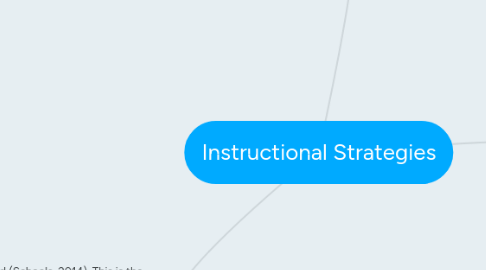
1. Independent Study
1.1. This method fosters the development of individual student initiative, self-reliance, and self-improvement. Independent study is planned study by students with guidance or supervision from the teacher. Although, I have use many methods of independent study I was not familiar with Learning logs.
1.1.1. Learning Logs are a simple and straightforward way to help students integrate content skills, personal reflection, and application. Learning logs operate from the stance that students learn from their own writing rather than writing what they have learned (Schools, 2014). Learning Logs can include reflection from discussion, experiments, questions and book lists.
1.1.2. Independent study always students to gain independence and create reports, research, learning logs, and journal. Learning Logs contain the advantage of being able to be incorporated in many subject areas or content areas. It also fits perfectly into any schedule, students just take five minutes out of their day to record their thinking or guided question given in their Learning Log.
1.1.3. A disadvantage for the independent study method is the lack of cooperative learning and hands on activities present. You can incorporate these things into your independent study. But with effort, independent study can become more engaging and motivating to the students. For example, the students would put little effort into Learning Logs if they are never shared or read. Allowing students to share their writing will not only enforce their learning, but incorporate cooperative learning.
1.1.4. This strategy could be enhance with technology by using Web 2.0 tools to create students reports or final products. Students can also use computer assisted instruction to record their Learning Logs on a online journal or a continues googledoc.
2. Experiential Learning
2.1. Experiential learning is inductive, learner centered, and activity oriented (Schools, 2014). This is the process of learning and building experiences not a product. One method I have not had the opportunity to use in my classroom yet is simulation. Simulations are instructional scenarios where the student is place in a "real-world" setting. They represent a reality within which students interact.
2.1.1. An advantage when using experiential learning, is truly the experience the student gain through the instruction. For example, simulations promote the use of critical and evaluative thinking. The students are gaining "real-world" experience. They are allowed to experience the the skill or concept first hand or put their learning into action.
2.1.2. A disadvantage that I find with experiential learning, simulations particularly, is the resources needed to complete these task. For example the time and money needed to take field trips or supplies needed for the students to complete a "real-world" expericence through simulation.
2.1.3. Experiential learning can be enhanced by technology through the use of computer games that provides simulations. Visiting website of museum and zoo can provide the student with a virtual field trip when you are unable to take a "real" field trip. One example of simulation I remember from school is using the computer to complete a Organ Trail simulation.
